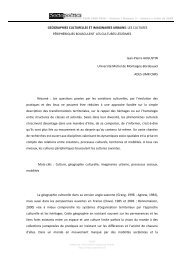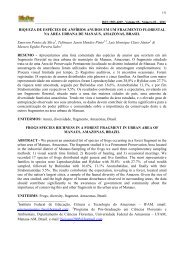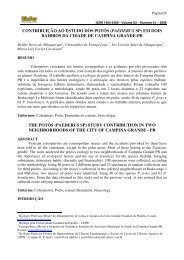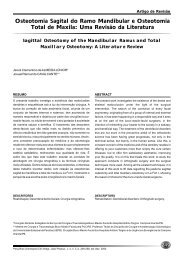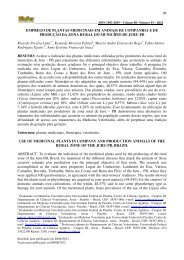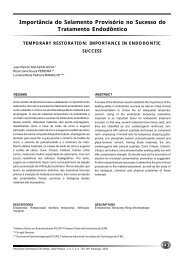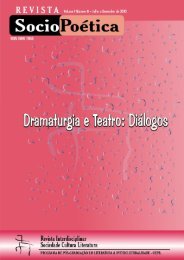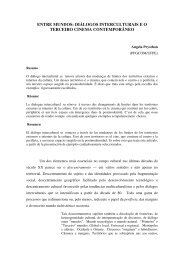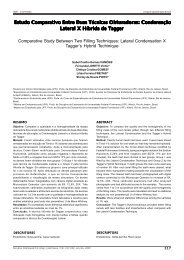Volume 1 - Número 8 - EDUEP - Uepb
Volume 1 - Número 8 - EDUEP - Uepb
Volume 1 - Número 8 - EDUEP - Uepb
Create successful ePaper yourself
Turn your PDF publications into a flip-book with our unique Google optimized e-Paper software.
SocioPoética - <strong>Volume</strong> 1 | <strong>Número</strong> 8<br />
julho a dezembro de 2011<br />
¿VISIOnARIA O MíStICA? hILDEGARDA DE BInGEn En LA<br />
EnCRUCIJADA DE LEnGUAJE Y ExPERIEnCIA DEL CRIStIAnO 1<br />
Resumen:<br />
por Cecilia Avenatti de Palumbo<br />
(Universidade Católica de Chile)<br />
Ante la perplejidad que suscita el uso del término “mística” – sea con función adjetiva<br />
o sustantiva– para referirse a textos y figuras cristianas medievales, modernas<br />
y contemporáneas, nos proponemos situar a Hildegarda de Bingen en la tradición<br />
visionaria y mística cristianas, a partir de la relación entre lenguaje y experiencia<br />
del misterio que su obra presenta. Tras el necesario deslinde de los marcos epistemológicos<br />
en los que ha sido tratada la cuestión –histórico, fenomenológico y<br />
teológico–, plantearemos una respuesta integradora de ambas tradiciones sobre la<br />
base del principio estético teológico que Hans Urs von Balthasar denominó como<br />
“visión de la figura”. Apoyaremos nuestra tesis sobre el análisis del texto descriptivo,<br />
interpretativo y plástico del Prólogo y Primera Visión de la Primera Parte de Scivias<br />
y sobre el corpus epistolar que tuvieron por destinatarios a Bernardo de Claraval y<br />
a Guibert de Gembloux.<br />
Palabras claves: Hildegard von Bingen, mística, Hans Urs von Balthasar, lenguaje,<br />
experiencia.<br />
Abstract<br />
Before the perplexity that provokes the use of the term “mysticism” - be with<br />
adjectival or substantive function - to refer to texts and Christian medieval,<br />
modern and contemporary figures, we propose to place Hildegard von Bingen<br />
in the visionary and mystical tradition you christen, from the relation between<br />
language and experience of the mystery that his work presents. After the necessary<br />
demarcation of the frames episthemologics in that the question has been treated<br />
–historically, phenomenologically and theologically–, we will raise an of integration<br />
response of both traditions on the base of the aesthetic theological beginning that<br />
Hans Urs von Balthasar named as “vision of the figure”. We will support our thesis<br />
on the analysis of the descriptive, interpretive and plastic text of the Prologue and<br />
The first Vision of the Scivias’s First Part and on the epistolary corpus that they had<br />
as addressees to Bernard de Claravaux and to Guibert de Gembloux.<br />
Key words: Hildegard von Bingen, mysticism, Hans Urs von Balthasar, language,<br />
experience<br />
1 Este artículo fue elaborado sobre la base de la ponencia leída en las Vº Jornadas Interdisciplinarias “Conociendo<br />
a Hildegarda. La abadesa de Bingen y su tiempo”, realizadas en la Academia Nacional de Ciencias de Buenos<br />
Aires, los días 15-16 de septiembre de 2011.<br />
105



